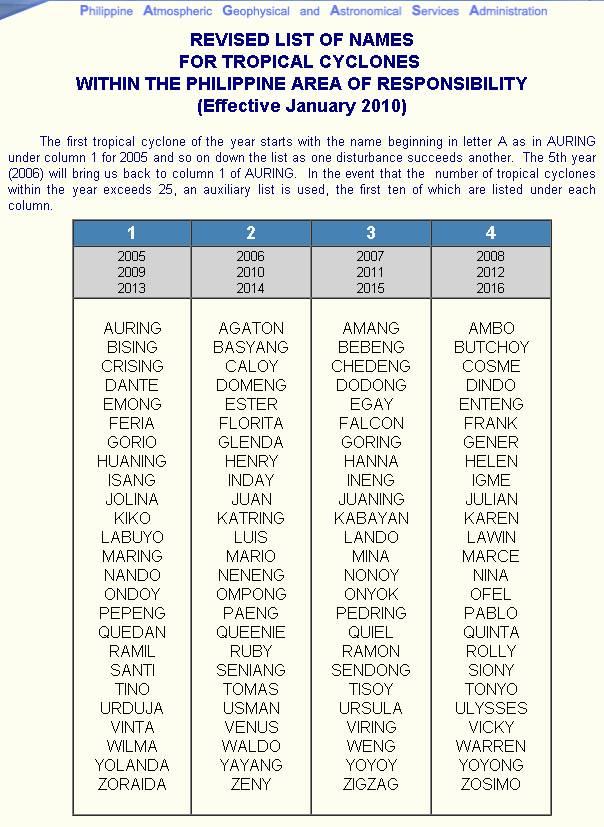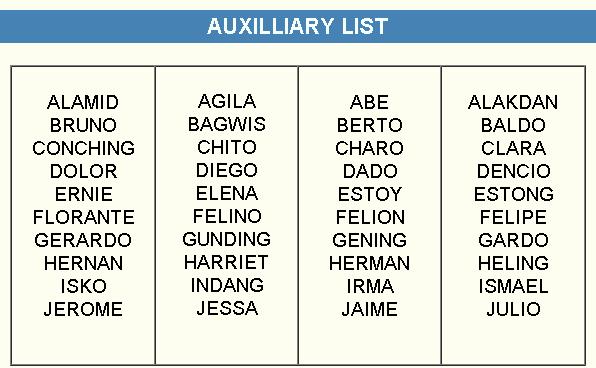Why and how storms get their names
According to the World Meteorological Organization (WMO), the international names of storms “make it easier for people to understand and remember the tropical cyclone in a region, thus to facilitate… disaster risk awareness, preparedness, management and reduction." “Experience shows that the use of short, distinctive given names in written as well as spoken communications is quicker and less subject to error than the older more cumbersome latitude-longitude identification methods," the WMO also said. Along this same rationale, PAGASA has been assigning names to tropical cyclones that enter the Philippine Area of Responsibility (AOR) that extends from 115E to 135E longitude and from 5N to 25N latitude — except for a portion of the northwestern corner of these coordinates. International codenames The names of storms around the world are the results of tedious work of an international committee of the WMO and five regional bodies responsible for specific sectors of the globe. Weather forecasting agencies of WMO member-countries submit lists of 10 names. For the Western North Pacific and South China Sea zone, the Philippine Atmospheric Geophysical and Astronomical Services Administration (PAGASA) presented the names Malaksi, Danas, Sinlaku, Lupit, Talas, Cimaron, Hagibis, Soudelor, Malakas, and Talim. PHL names of storms PAGASA’s practice of assigning local names to storms began in 1963. “It is felt that familiar names are more easily remembered in the rural areas and that having a PAGASA- assigned name helps to underscore the fact that the cyclone is within PAGASA's AOR and potentially a threat to the Philippines," according to the United States’ National Oceanic and Atmospheric Administration (NOAA). “Since tropical and/or monsoon depressions can bring very heavy rainfall to the nation which often results in disastrous flooding, the weather service feels that assigning a name helps to enhance public attention given to a system," NOAA also said.






